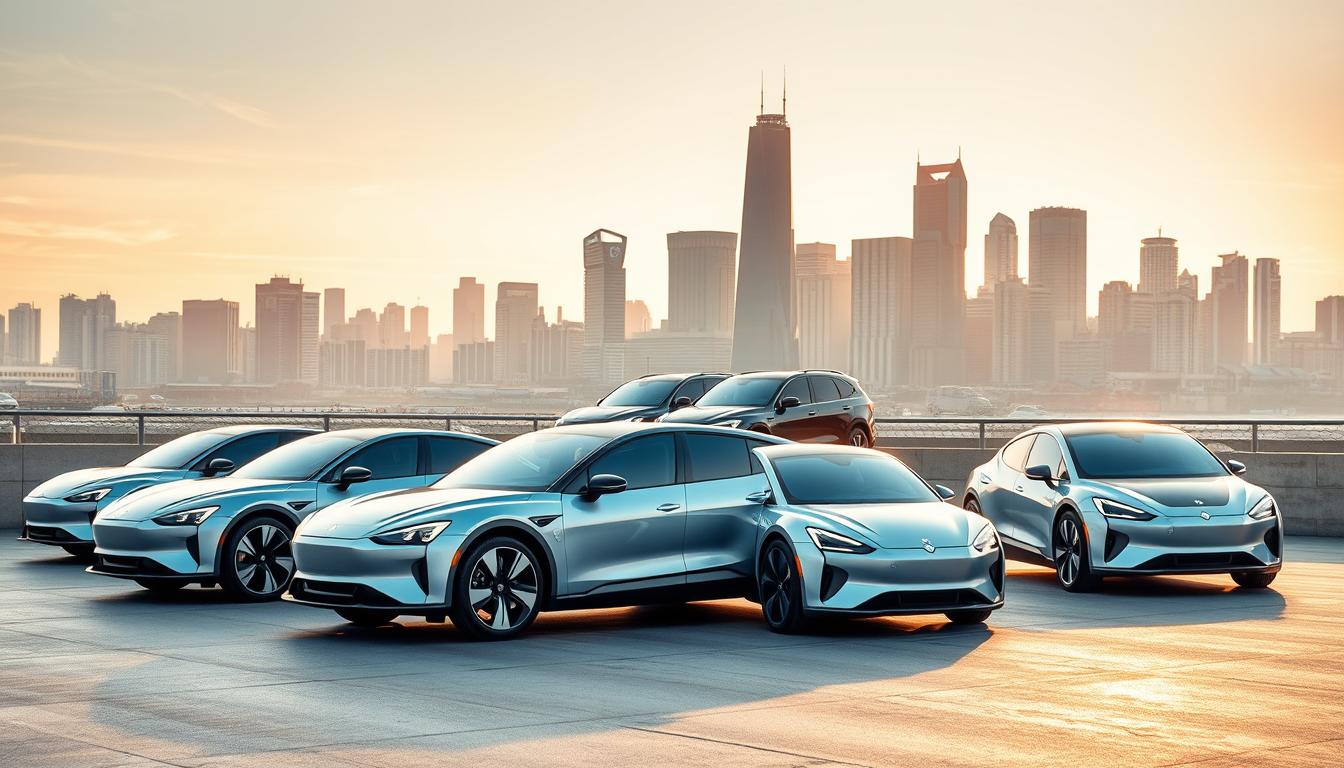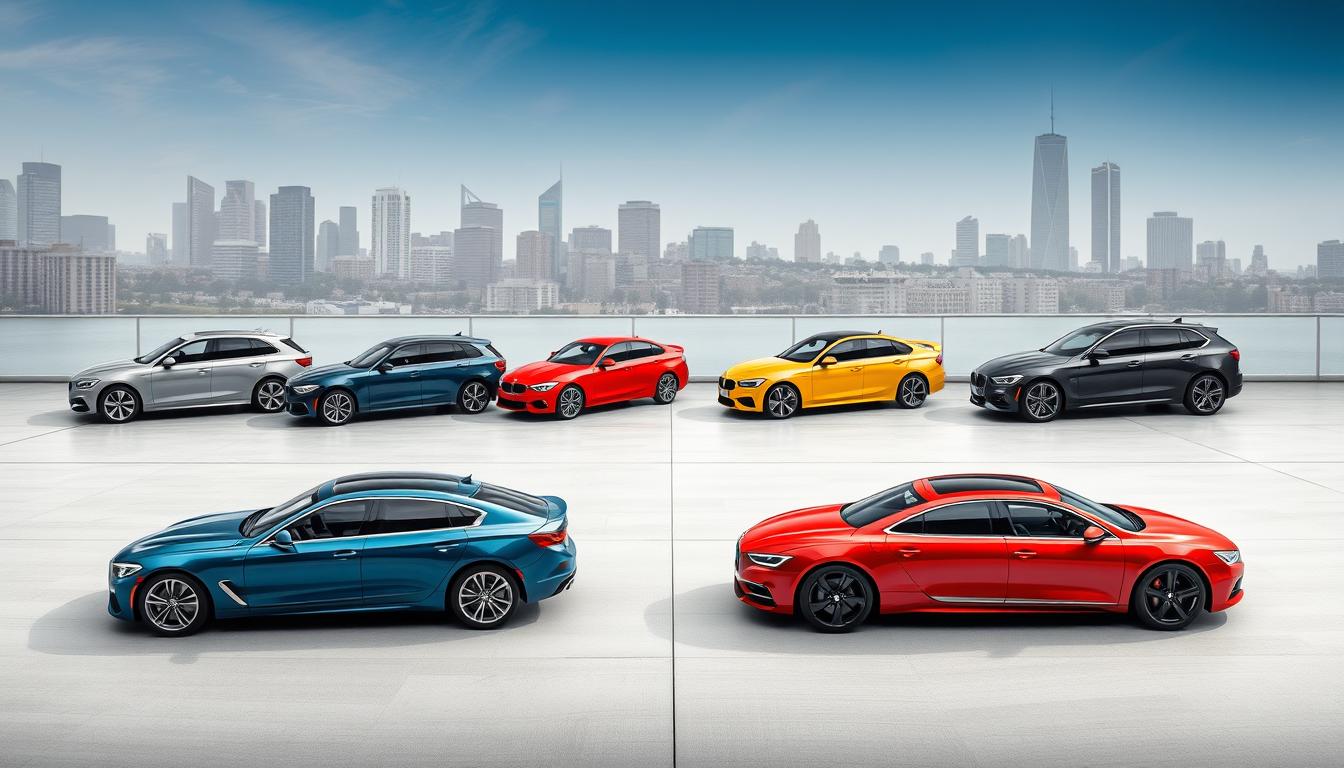Despite the uncertainty surrounding electric vehicles, global automotive manufacturers are rapidly expanding their line-ups with new models. Sales in China have been robust, and Europe is seeing increased adoption thanks to more affordable options becoming available.
We’re on the cusp of a significant shift in the automotive market, with electric cars becoming more attainable for the masses. Even in the US, where there’s uncertainty about the future of battery electric vehicles, sales are predicted to grow by 16% in 2025, according to Rho Motion.
Our comprehensive guide will explore the most anticipated electric vehicles coming to the market, highlighting innovations and helping you navigate the expanding EV landscape.
Key Takeaways
- Discover the most anticipated electric vehicles set to launch in 2025.
- Learn about the innovations pushing the EV industry forward.
- Understand how manufacturers are addressing range and charging concerns.
- Find out which electric vehicle might best suit your lifestyle and driving needs.
- Get insights into performance, range, and value propositions of upcoming EVs.
The Electric Revolution Continues
The automotive industry is witnessing a paradigm shift with the world’s biggest automakers releasing fantastic electric cars that are redefining the market. As a result, electric vehicles are becoming increasingly competitive with traditional combustion engine cars. This shift is driven by significant advancements in technology and design.
Market Growth and Consumer Adoption
The electric vehicle market is experiencing rapid growth, driven by consumer adoption and technological advancements. Consumers are increasingly preferring EVs due to their efficiency and reduced environmental impact. As more automakers enter the EV market, competition is increasing, leading to better products and lower prices.
| Model | Range | Charging Time |
|---|---|---|
| Tesla Model 3 | 350 miles | 30 minutes |
| Porsche Taycan | 280 miles | 22.5 minutes |
| Hyundai Ioniq 5 | 300 miles | 18 minutes |
Key Innovations Driving the 2025 EV Market
Several key innovations are driving the EV market towards 2025. Advancements in battery technology are extending the range and reducing charging times. Solid-state batteries and other emerging technology are expected to transform the EV landscape. Moreover, manufacturers are developing more efficient electric motors and power management systems to maximize performance and range. Innovations in design are also creating more aerodynamic and efficient vehicles.
These advancements are not only improving the efficiency and performance of EVs but also making them more appealing to a wider audience. As design and technology continue to evolve, we can expect to see even more impressive electric vehicles on the market.
What Makes an EV Worth Buying in 2025
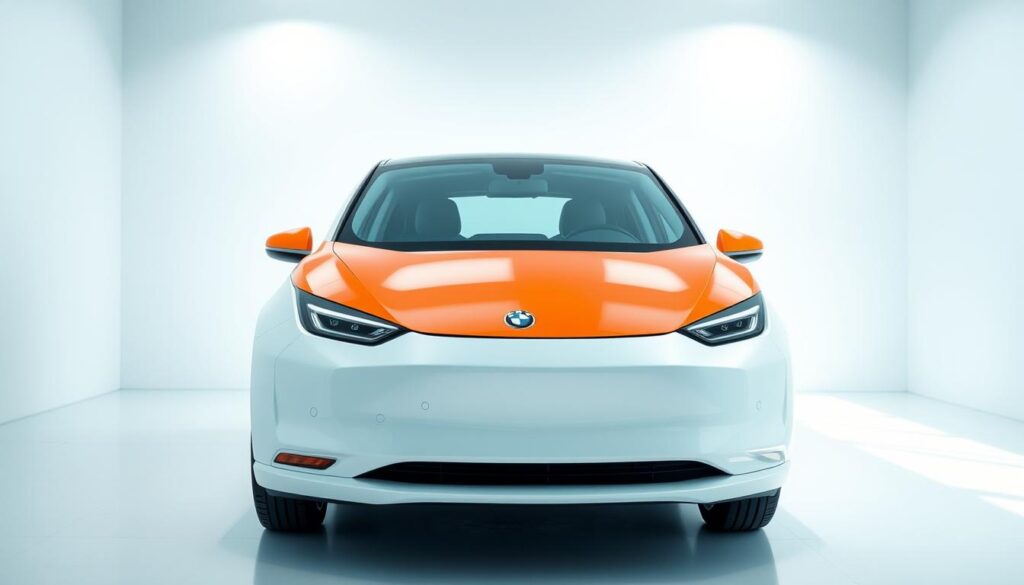
As we look to the future of electric vehicles, understanding what makes an EV worth buying in 2025 is crucial. The electric vehicle market is rapidly evolving, with advancements in technology and changes in consumer preferences.
Range and Charging Capabilities
The range and charging capabilities of an electric car are critical factors in determining its worth. In 2025, we expect to see electric vehicles with longer ranges and faster charging times. Many models are now offering ranges of over 300 miles on a single charge, making long-distance travel more feasible.
Fast-charging technology is also becoming more prevalent, allowing drivers to recharge their vehicles quickly. This improvement in charging infrastructure is essential for widespread adoption.
Performance Metrics That Matter
Performance is another key consideration when evaluating an electric vehicle. Metrics such as acceleration, horsepower, and torque are important for understanding an EV’s capabilities. Many electric cars offer exceptional performance, with some models accelerating from 0 to 60 mph in under 3 seconds.
Value Proposition and Total Cost of Ownership
When assessing the value of an electric car, the total cost of ownership is a crucial factor. While electric cars are typically more expensive to buy upfront, they offer significant savings over time. Lower maintenance costs due to fewer moving parts and reduced energy costs compared to gasoline-powered vehicles contribute to these savings.
To illustrate the cost savings, consider the following comparison:
| Vehicle Type | Initial Price | Maintenance Cost (5 years) | Energy Cost (5 years) | Total Cost (5 years) |
|---|---|---|---|---|
| Electric Vehicle | $40,000 | $3,000 | $2,000 | $45,000 |
| Gasoline-Powered Vehicle | $35,000 | $5,000 | $8,000 | $48,000 |
As shown in the table, while the initial price of an electric vehicle may be higher, the total cost over five years can be lower due to reduced maintenance and energy costs. This makes the value proposition of an electric car increasingly attractive.
Luxury Performance EVs Leading the Pack
Luxury performance EVs are redefining the automotive landscape with their exceptional power and sleek designs. As we explore the top models of 2025, it becomes clear that these vehicles are not just about speed but also about luxury and innovative technology.
Porsche Macan Electric
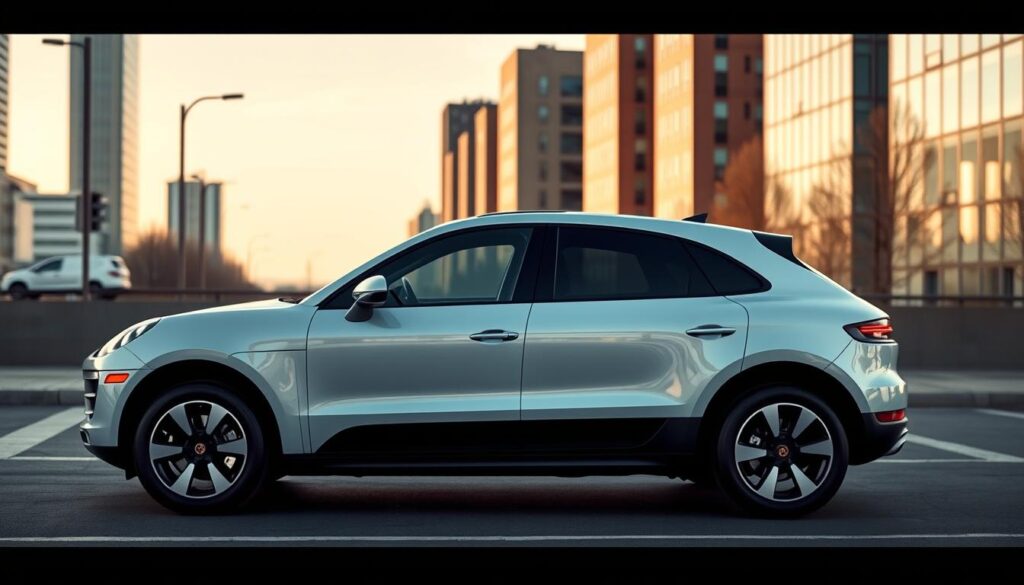
Overview
The Porsche Macan Electric is set to revolutionize the luxury electric car segment with its impressive specifications. With a powerful electric motor, it promises a driving experience like no other.
Key Features
The Macan Electric boasts advanced technology, including a high-capacity battery and rapid charging capabilities. Its performance is enhanced by its ability to reach high speeds in a short amount of time, making it a thrilling drive.
Pros
One of the significant advantages of the Macan Electric is its luxury features, combined with Porsche’s renowned performance. It also offers a sustainable alternative without compromising on power.
Cons
While the Macan Electric is a marvel of modern technology, its high price point may be a deterrent for some potential buyers. Additionally, the charging infrastructure, although improving, can still be a concern in certain areas.
Maserati GranCabrio Folgore
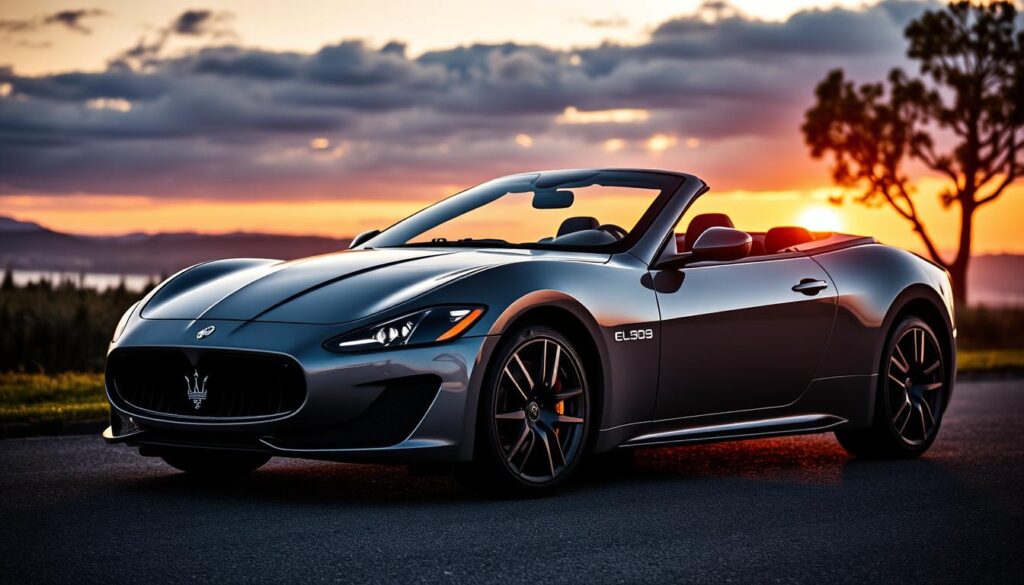
Overview
The Maserati GranCabrio Folgore is a masterpiece of Italian craftsmanship, blending luxury with electric power. Its design is both elegant and aerodynamic, making it a standout in the luxury EV market.
Key Features
Equipped with three 300kW motors, the GranCabrio Folgore achieves a remarkable 0-62mph in just 2.8 seconds. The folding fabric roof adds to its allure, operating in just 15 seconds.
Pros
The GranCabrio Folgore offers an unparalleled driving experience, with its powerful electric motors and refined driving dynamics. It’s suitable for both spirited driving and relaxed cruising, making it a versatile car.
Cons
As with any luxury vehicle, the GranCabrio Folgore comes with a hefty price tag. Moreover, the transition to electric might not appeal to purists who prefer the traditional Maserati engine sound.
Electric SUVs Redefining Family Transport
As the demand for eco-friendly family cars grows, electric SUVs are leading the charge. These vehicles are not just environmentally friendly; they also offer spacious interiors, advanced technology, and impressive performance.
Lotus Eletre
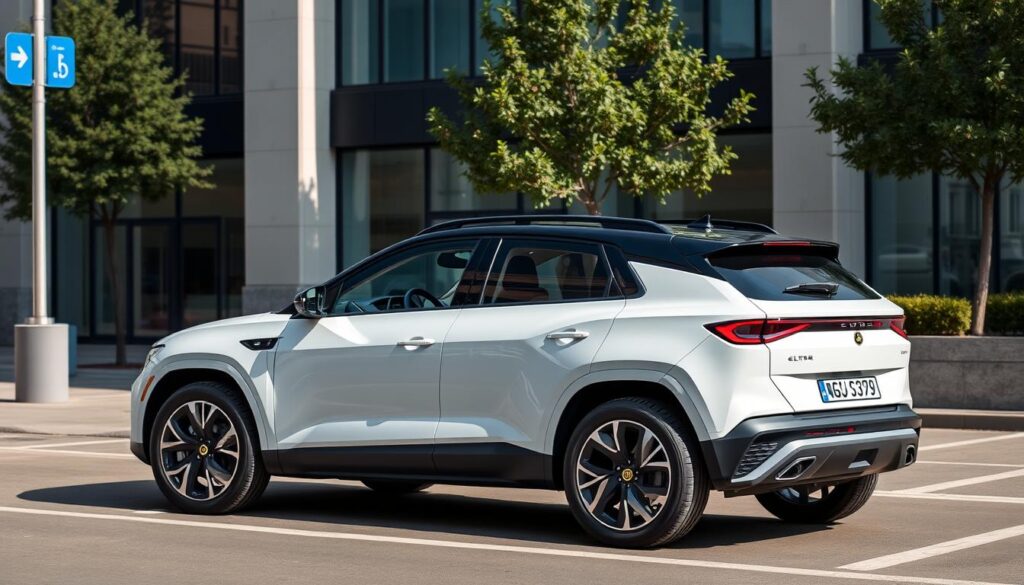
Overview
The Lotus Eletre is a groundbreaking electric SUV that combines luxury with performance. With its advanced electric powertrain, it offers a unique driving experience.
Key Features
The Eletre boasts a range of innovative features, including a state-of-the-art interior and advanced safety technologies. Its electric battery is designed for efficiency and performance.
Pros
The Lotus Eletre offers exceptional handling and a luxurious driving experience. Its electric powertrain provides instant torque, making it a thrilling drive.
Cons
While the Eletre is a remarkable vehicle, its pricing may be a barrier for some potential buyers. Additionally, the brand’s relatively new presence in the electric SUV market may raise questions about long-term reliability.
Hyundai Ioniq 9
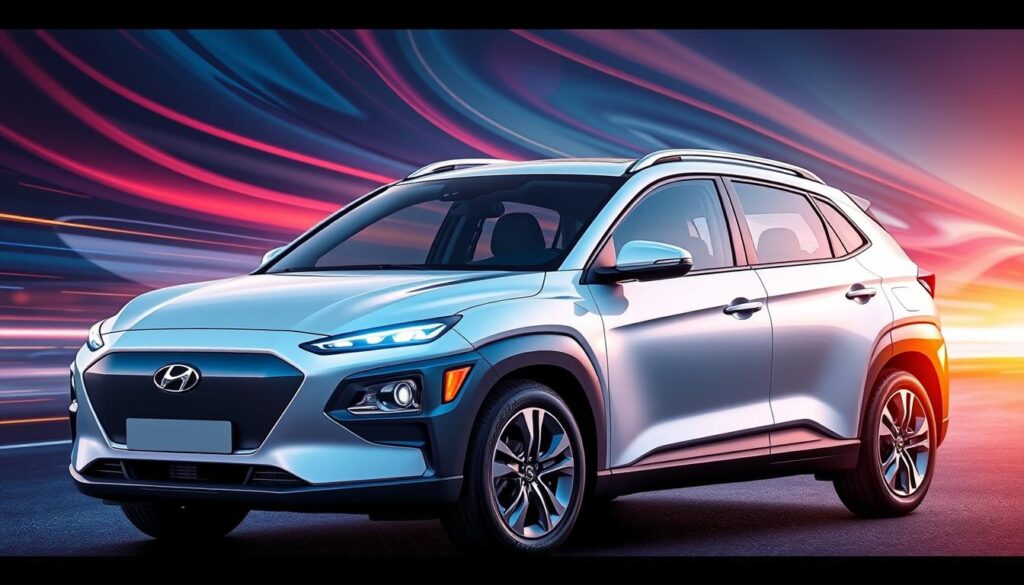
Overview
The Hyundai Ioniq 9 is a family-friendly electric SUV that offers spacious accommodations for up to seven passengers. It’s designed to provide comfort and practicality without compromising on performance.
Key Features
The Ioniq 9 features a premium interior with high-definition screens and premium materials. Its electric SUV design ensures a smooth and quiet ride.
Pros
With its rapid charging capability, the Ioniq 9 minimizes downtime, making it ideal for family road trips. It also offers an impressive range of up to 335 miles on a single charge.
Cons
While the Ioniq 9 is a versatile vehicle, its size may be a concern for those living in urban areas with limited parking spaces.
In conclusion, both the Lotus Eletre and Hyundai Ioniq 9 are redefining family transport with their innovative designs and capabilities. As the market for electric SUVs continues to grow, these models are set to play a significant role in shaping the future of family-friendly cars.
Electric Vehicles Top Picks for 2025 in the Mid-Range Segment
In the rapidly evolving electric vehicle landscape, the mid-range segment is where some of the most compelling options are emerging in 2025. This segment is characterized by a balance of affordability, performance, and innovative design. We will explore two standout models: the updated Tesla Model 3 and the Polestar 4.
Tesla Model 3 (Updated Version)
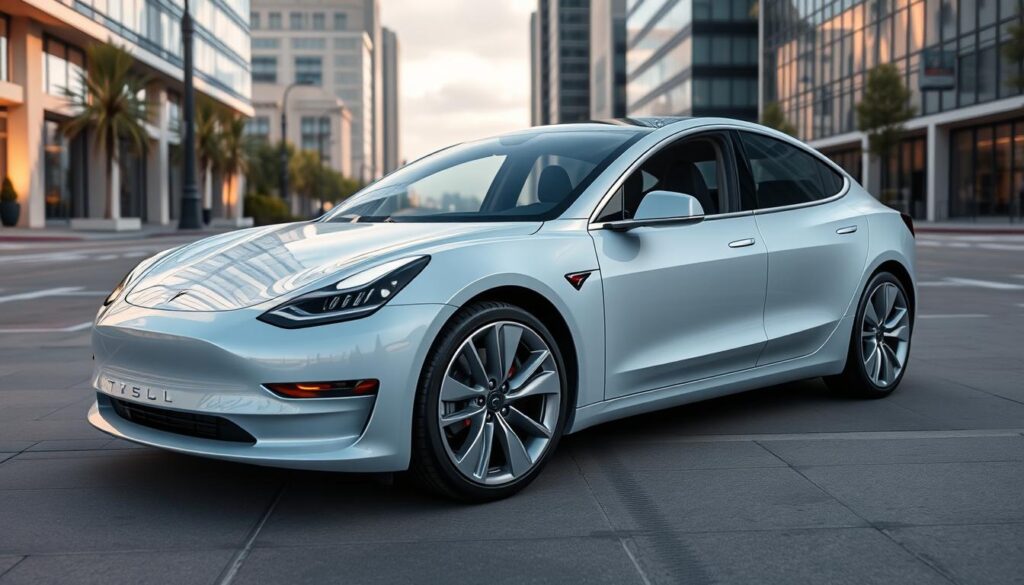
Overview
The 2025 Tesla Model 3 has undergone significant updates, enhancing its appeal in the competitive mid-range EV market. With improvements in design and performance, this version is set to further solidify Tesla’s dominance.
Key Features
The updated Model 3 boasts a refreshed design with a more aerodynamic profile, contributing to its increased range and efficiency. The interior has also been revamped with new technology features and premium materials.
Pros
One of the key advantages of the 2025 Tesla Model 3 is its enhanced range, allowing for longer trips without the need for frequent charging. Additionally, its updated version brings improved performance, making it a compelling choice for those seeking a balance between efficiency and driving dynamics.
Cons
Some critics argue that the updated Model 3, while improved, still lags behind some of its competitors in terms of overall design innovation. However, its loyal customer base appreciates the reliability and continuous improvement Tesla is known for.
Polestar 4
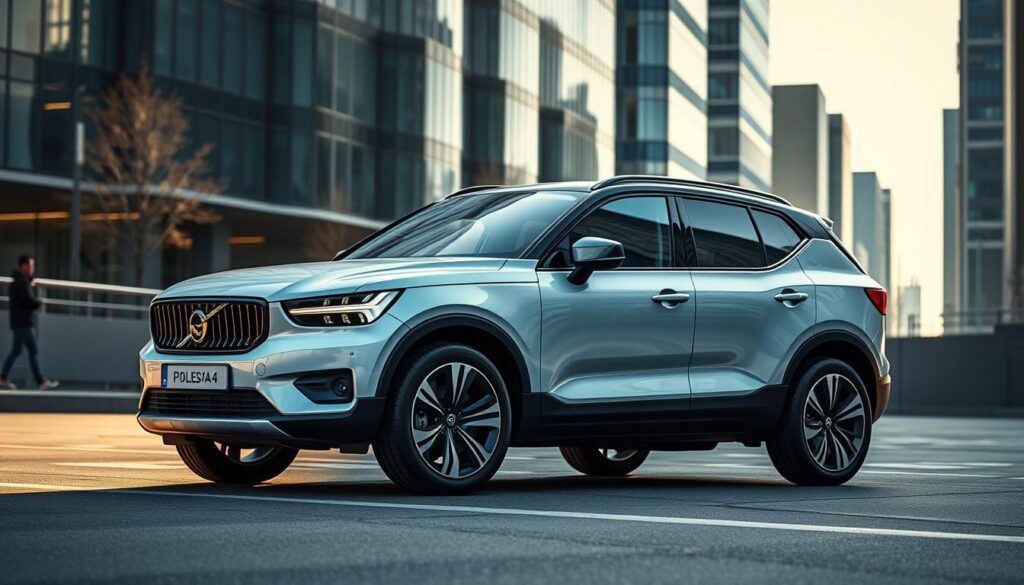
Overview
Polestar has made a bold statement with the Polestar 4, an electric crossover that has garnered attention for its unique design choices, including the elimination of the rear window in favor of a camera-based system.
Key Features
The Polestar 4 is available with a choice of powertrains, including a single-motor car producing 272hp and a dual-motor variant delivering 400kW. The rear-view camera system provides a futuristic driving experience, although it may require some adjustment period for drivers accustomed to traditional rear-view mirrors.
Pros
The Polestar 4’s design is undeniably striking, setting it apart in a crowded market. Its performance is also noteworthy, with the dual-motor option offering exhilarating acceleration and a smooth ride thanks to adaptive damping.
Cons
Some potential drawbacks include the unconventional rear view system, which may not appeal to everyone, particularly pet owners who might find the gloomy trunk less appealing for their pets.
Compact EVs for Urban Environments
As cities continue to evolve, the demand for compact electric vehicles (EVs) that can navigate urban environments with ease is on the rise. These vehicles are not only eco-friendly but also offer a practical solution for city dwellers.
Mini Cooper Electric

Overview
The Mini Cooper Electric brings the iconic Mini design into the electric age, offering a unique blend of style and sustainability. With its compact size, it’s perfect for navigating tight city streets.
Key Features
The Mini Cooper Electric boasts innovative design elements while maintaining its classic appeal. It features a range of up to [insert range] miles, making it suitable for daily urban commutes.
Pros
Efficient and eco-friendly, the Mini Cooper Electric is ideal for those looking to reduce their carbon footprint. Its compact size makes parking and maneuvering in tight spaces easy.
Cons
While it offers a great urban driving experience, the range might be a limiting factor for some users. However, for city driving, it provides more than enough range.
Renault 5 E-Tech
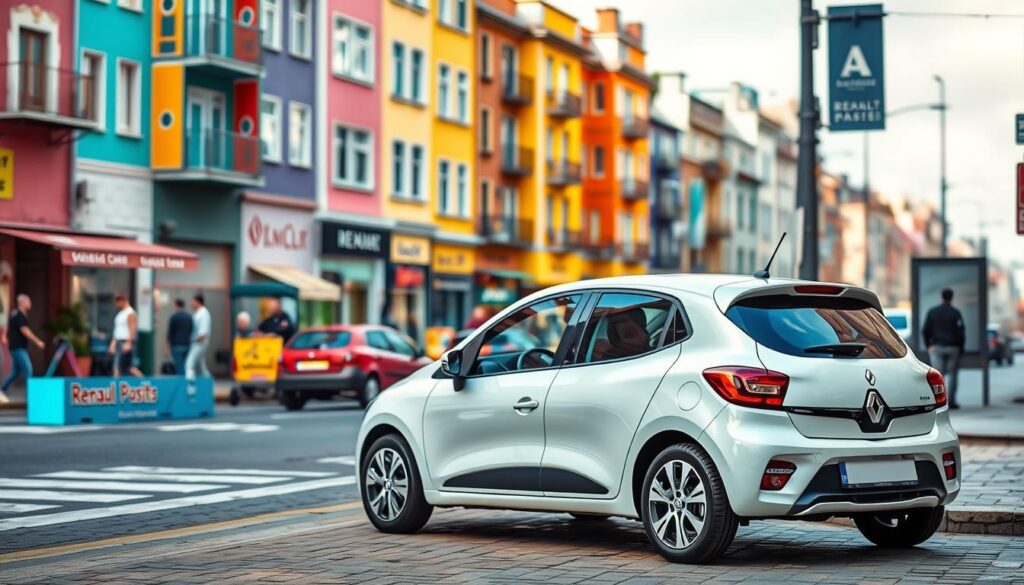
Overview
The Renault 5 E-Tech is a retro-futuristic take on the classic R5, reimagined for the electric era. It combines nostalgic design cues with modern technology, creating a characterful urban EV.
Key Features
With its faithful reinterpretation of the original R5’s silhouette and modern proportions, the Renault 5 E-Tech stands out. It features an illuminated number “5” within the front logo and distinctive bonnet vents housing the charging indicator.
Pros
The Renault 5 E-Tech offers brisk acceleration with 152 horsepower and a range of up to 248 miles. Its playful personality and vibrant color options make it a compelling choice for urban dwellers.
Cons
While it excels in many areas, the availability of certain features might be limited to higher specs, which could affect the overall cost.
Both the Mini Cooper Electric and Renault 5 E-Tech are redefining the urban EV landscape with their unique designs and capabilities. As the market continues to evolve, these vehicles are set to play a significant role in shaping the future of urban mobility.
Affordable Electric Options
The shift towards electric mobility is gaining momentum, with affordable electric vehicles leading the charge. As the electric vehicle (EV) market continues to expand, manufacturers are now focusing on making electric cars more accessible to a broader audience. This shift is crucial in promoting the adoption of electric vehicles worldwide.
Kia EV3
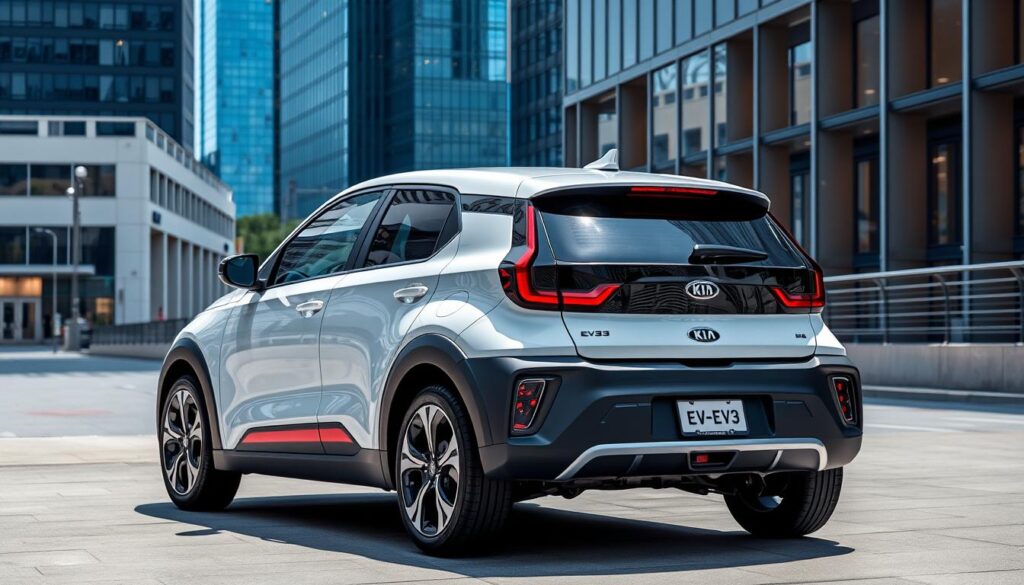
Overview
The Kia EV3 is one of the latest additions to the affordable electric SUV segment. With its competitive price and feature-packed profile, it aims to attract budget-conscious buyers looking for a reliable electric car.
Key Features
The Kia EV3 boasts a range of innovative features, including a spacious interior, advanced safety features, and a respectable battery range that allows for approximately 300 miles on a single charge. Its design is both modern and aerodynamic, enhancing its overall efficiency.
Pros
The Kia EV3 offers several advantages, including its affordability, feature-rich interior, and eco-friendly electric car technology. It’s an excellent choice for those looking to transition to an EV without breaking the bank.
Cons
While the Kia EV3 is a strong contender in its class, some potential drawbacks include the limited availability of charging infrastructure in certain areas and the need for more vehicles like it in the market to drive down prices further.
Dacia Spring
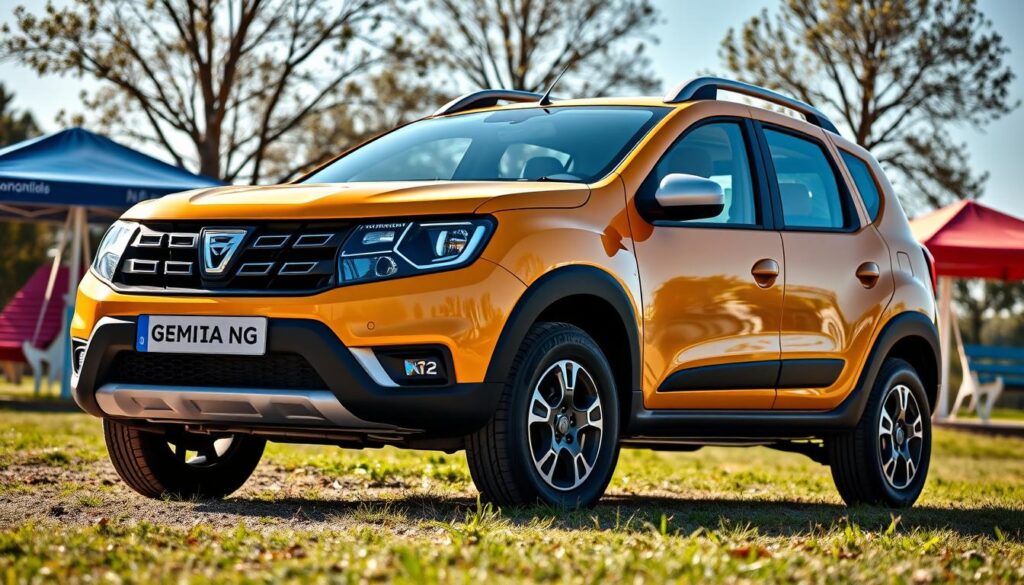
Overview
The Dacia Spring is a pioneering model that has brought electric motoring to the masses with its incredibly low starting price of around $19,000. It’s designed for urban driving and offers a practical solution for those looking for an affordable electric car.
Key Features
Despite its low cost, the Dacia Spring comes with essential features such as heaters, electric windows, and electrically-adjustable door mirrors. It has a battery pack of 26.8kWh, providing a range of around 140 miles on a single charge.
Pros
The Dacia Spring is remarkably affordable and offers a simple, no-frills approach to electric driving. Its lightweight construction contributes to its efficiency, making it an economical choice for short trips and city driving.
Cons
Some limitations of the Dacia Spring include its modest performance, with a top speed of 78mph, and its limited range. However, for its intended use case, it remains a viable and attractive car option.
Innovative Designs Breaking the Mold
Innovative electric vehicle designs are not just about aesthetics; they’re also about enhancing performance and efficiency. As the electric vehicle (EV) market continues to evolve, manufacturers are pushing the boundaries of design and technology to create truly exceptional cars.
MG Cyberster
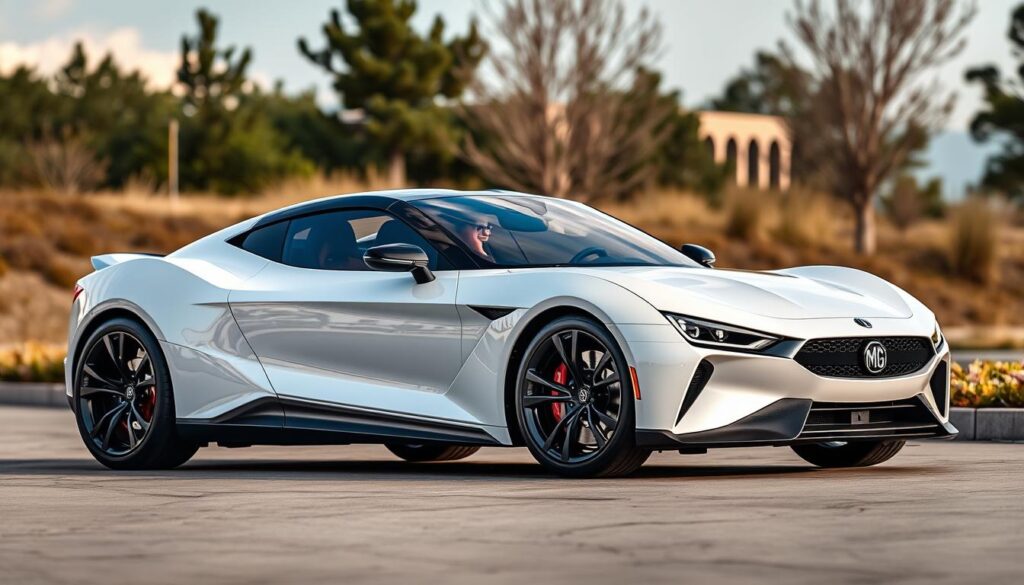
Overview
The MG Cyberster is a revolutionary electric sports car that embodies the spirit of innovation and design excellence. With its sleek and aerodynamic profile, the Cyberster is poised to make a significant impact in the EV market.
Key Features
The MG Cyberster boasts several cutting-edge features, including its advanced electric powertrain, aerodynamic design elements, and a luxurious interior. The car’s design is not only visually stunning but also contributes to its overall performance and efficiency.
Pros
The Cyberster’s innovative design and advanced technology make it a compelling choice for those seeking a high-performance electric sports car. Its sleek design and impressive performance capabilities are sure to turn heads on the road.
Cons
While the MG Cyberster is an exciting new entrant in the EV market, its pricing and availability may be factors that some potential buyers need to consider.
BYD Seal
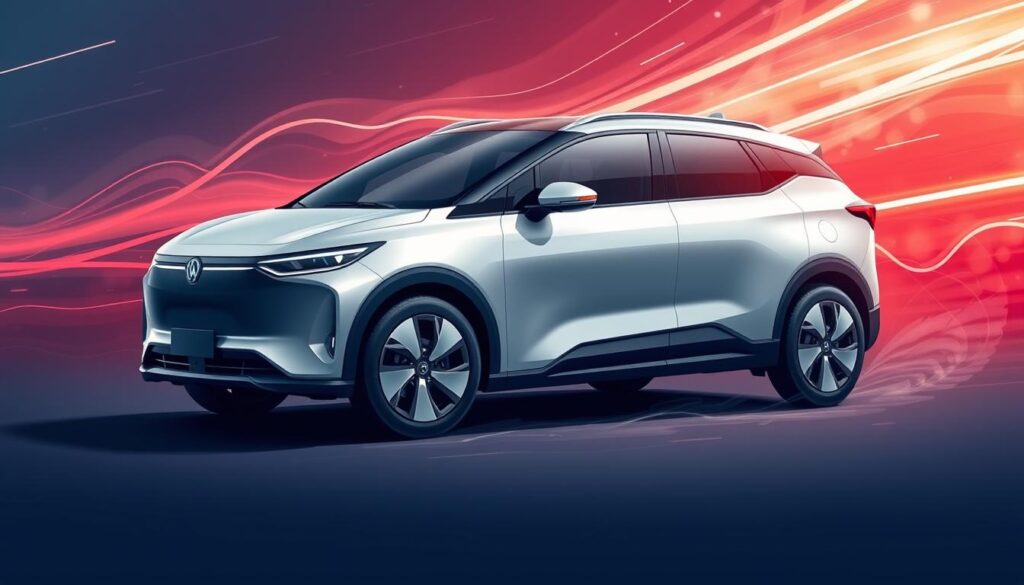
Overview
The BYD Seal is a testament to the rapid advancement of Chinese electric vehicles in terms of design sophistication and technology. This sleek four-door fastback combines racy proportions with innovative aerodynamic elements to create a genuine Tesla challenger.
Key Features
The Seal’s design highlights include a coupe-like silhouette with a smoothly integrated rear spoiler, a front “ocean face” grille treatment that improves aerodynamics, flush door handles that enhance the clean side profile, and a full-width LED light bar with a dynamic welcome sequence. With up to 523 horsepower in dual-motor form and a 0-62mph time of just 3.8 seconds, the Seal delivers impressive performance metrics.
Pros
The BYD Seal represents a significant step forward for the brand in terms of design and technology, offering a compelling alternative to established Western electric cars. Its sophisticated aerodynamic design elements enhance both its visual appeal and efficiency.
Cons
As with any new model, the BYD Seal may face challenges related to brand recognition and the perception of Chinese vehicles in Western markets.
Both the MG Cyberster and BYD Seal are examples of how innovative designs are breaking the mold in the electric vehicle market, offering a mix of design, performance, and technology that is set to redefine the industry.
Family-Friendly Electric Options
Renault’s latest offering, the Scenic E-Tech, is redefining the family electric vehicle segment with its innovative design. This electric crossover maintains practicality while incorporating distinctive design elements that set it apart from conventional family cars.
Renault Scenic E-Tech
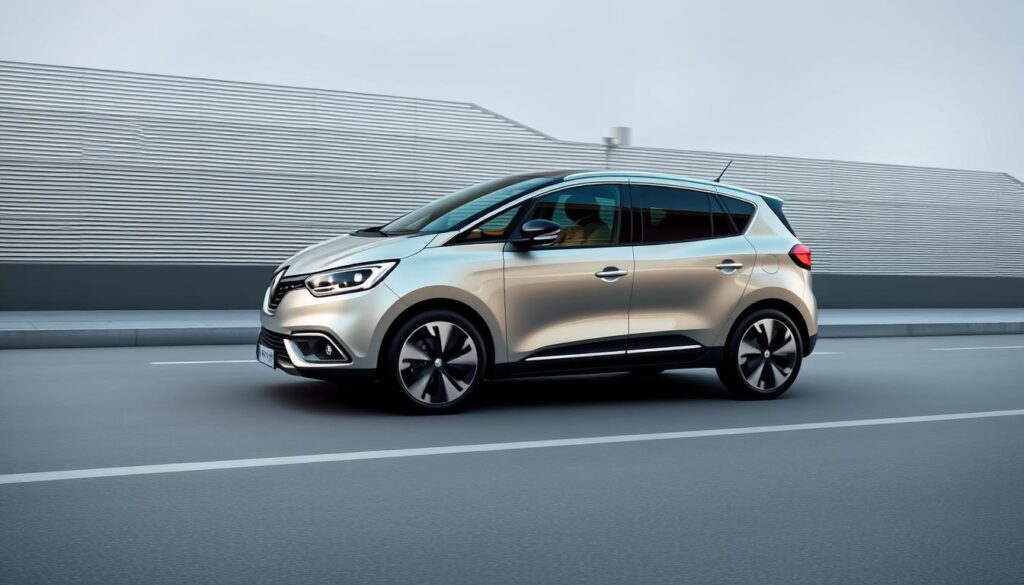
Overview
The Renault Scenic E-Tech is a testament to how family-friendly vehicles needn’t compromise on style or space. With a range of 379 miles, it’s an ideal electric car for family road trips without charging anxiety.
Key Features
The Scenic E-Tech boasts a modern reinterpretation of the pioneering MPV now as a crossover, with features like a distinctive split-level headlight design, an illuminated Renault logo, and aerodynamic 20-inch wheels with unique bi-colour treatment. It also offers a spacious interior and flexible seating arrangements, making it perfect for families needing ample space.
Pros
The Scenic E-Tech offers practical performance for family needs with its 220 horsepower. Its thoughtful design elements balance aesthetic appeal with family-friendly functionality.
Cons
While the Scenic E-Tech excels in many areas, its pricing and specific features compared to other family-oriented vehicles should be considered.
How to Choose the Right EV for Your Needs
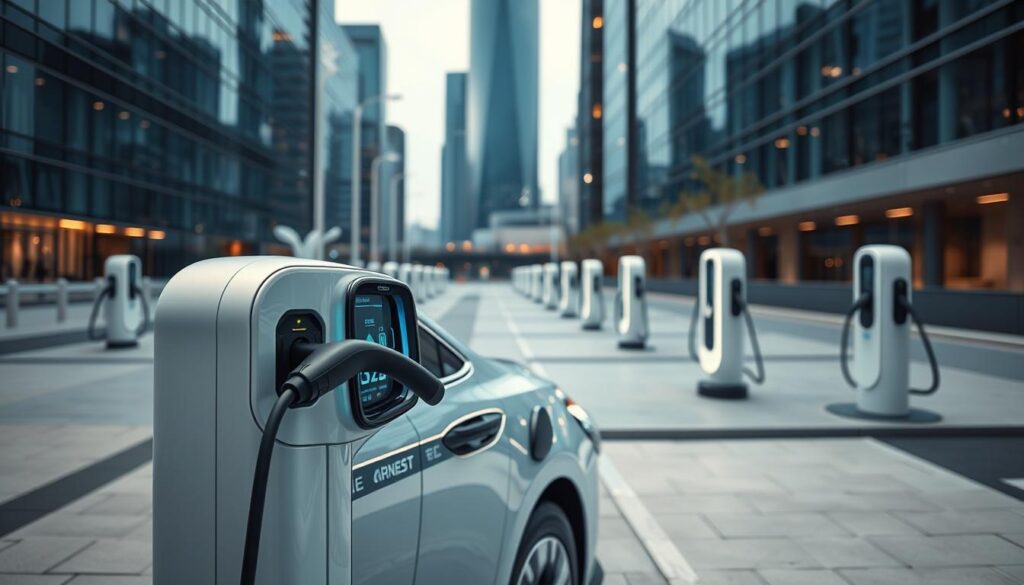
The key to choosing the right electric vehicle lies in understanding your driving habits and assessing your charging needs. As the electric vehicle market continues to grow, it’s essential to consider what will work best for you.
Assessing Your Driving Habits and Requirements
To select the ideal electric vehicle, you need to evaluate your typical driving patterns. Consider the distance you travel daily, the type of roads you usually drive on, and whether you often carry passengers or cargo. For instance, if you’re a daily commuter with a long drive to work, you’ll want an EV with a sufficient range to get you to your destination and back home without needing a recharge. On the other hand, if you mostly drive around the city, a smaller EV with a shorter range might be more suitable and cost-effective.
As “the potential for low running costs” is a significant benefit of EVs, especially with access to a charging point at home or work, understanding your charging requirements is crucial. If you have a dedicated parking spot at home, installing a home charging station can be a convenient option.
Infrastructure Considerations
Charging infrastructure is a critical factor when choosing an electric vehicle. You need to consider both home charging options and the availability of public charging networks. If you have the ability to charge your vehicle at home, it’s generally more cost-effective than relying solely on public charging points. However, it’s also important to evaluate the public charging infrastructure along your frequently traveled routes and at your common destinations.
For those living in apartments or without dedicated parking, public charging becomes a more significant consideration. Different charging speeds, such as Level 1, Level 2, and DC fast charging, can affect the practicality of various electric vehicles for different use cases. As the charging infrastructure continues to expand and evolve, being aware of these factors will help you navigate the transition to electric vehicle ownership more smoothly.
The Future of Electric Mobility Beyond 2025
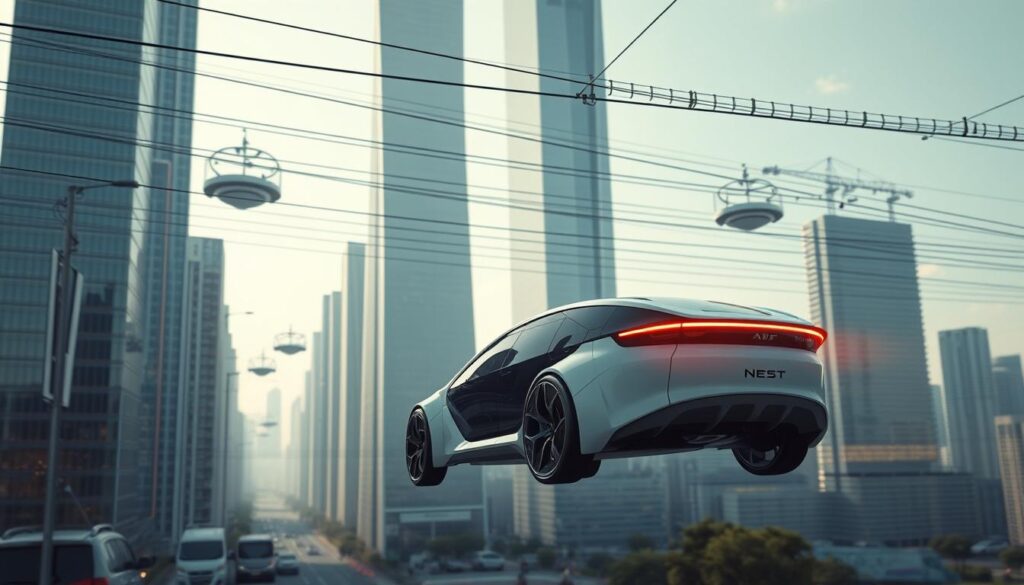
The electric vehicle market is on the cusp of a revolution, driven by technological innovations and changing consumer preferences. As with any new technology, electric cars are likely to get cheaper as the technology improves and develops, and the manufacturing process becomes cheaper. We’re already seeing more affordable electric cars being launched, including the Dacia Spring, MG4, and Renault 5, which are bringing the starting price of electric models down significantly.
Several key developments will shape the future of electric vehicles beyond 2025. Solid-state batteries and other advanced energy storage solutions are expected to play a crucial role. These technologies promise to enhance the range, efficiency, and overall performance of electric vehicles.
Continued improvements in manufacturing scale and process are anticipated to further reduce the cost of electric vehicles, potentially achieving price parity with combustion engines. Increased standardization across charging infrastructure and battery technology will also improve the overall electric vehicle ecosystem.
| Technological Advancement | Impact on Electric Vehicles |
|---|---|
| Solid-State Batteries | Enhanced range and efficiency |
| Manufacturing Scale-Up | Reduced costs, potentially achieving price parity with combustion engines |
| Standardization of Charging Infrastructure | Improved user experience and adoption rates |
Established automotive brands are positioning themselves for a fully electric future, while new entrants may disrupt the market. Policy developments and regulatory frameworks will continue to influence the adoption of electric vehicles.
As consumer expectations evolve, the next generation of electric vehicles will be shaped by their preferences, driving further innovation in the industry.
Conclusion
With 2025 on the horizon, the electric vehicle industry continues to evolve at a rapid pace. The diverse range of electric vehicles covered in this article, from luxury performance models to affordable urban options, demonstrates that there are now EVs to suit virtually every need and budget.
Electric vehicles have progressed significantly, increasingly competing with and often surpassing traditional combustion engines in many aspects. While challenges remain for widespread EV adoption, the industry is addressing these issues at a rapid pace.
As you consider your next car or vehicle, we encourage you to explore how an electric vehicle might fit into your lifestyle. For personalized guidance on selecting the right EV for your specific needs, feel free to contact us via WhatsApp at +44-7822010953.
Looking ahead, the future of electric mobility is bright, with the potential to transform transportation in the coming years. As the industry continues to mature, we can expect even more innovative new electric models and technologies from various brand leaders.
